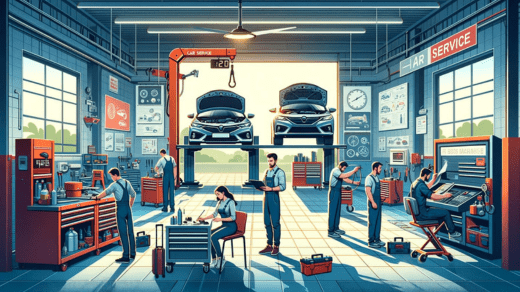In the realm of vehicle maintenance, truck wheel alignment stands as a critical yet often overlooked aspect. Ensuring that the wheels of a truck are properly aligned is not only essential for prolonging the lifespan of tires but also plays a pivotal role in maintaining safety on the road. This article delves into the significance of truck wheel alignment, its impact on vehicle performance, and the importance of regular maintenance. Additionally, we’ll explore how addressing issues such as auto glass repair can tie into overall vehicle safety and efficiency.
Understanding Truck Wheel Alignment
Truck wheel alignment refers to the precise adjustment of the angles of the wheels to manufacturer specifications. These angles include camber, caster, and toe. Camber refers to the vertical tilt of the wheels, caster relates to the angle of the steering pivot, and toe measures the angle of the wheels concerning each other when viewed from above. When these angles deviate from the recommended settings, it leads to misalignment, causing uneven tire wear and steering instability.
Impact on Vehicle Performance
Proper wheel alignment is vital for maintaining vehicle performance. Misaligned wheels can result in uneven tire wear, leading to premature tire replacement and increased operating costs. Moreover, misalignment affects steering response, making it more challenging to control the vehicle, especially during emergency maneuvers. This not only compromises safety but also diminishes the overall driving experience and fuel efficiency.
Safety Concerns
Safety is paramount on the road, especially for trucks carrying heavy loads. Misaligned wheels can lead to unpredictable handling, increasing the risk of accidents, particularly when navigating sharp turns or encountering adverse road conditions. Additionally, steering instability caused by misalignment can make it difficult for drivers to maintain control, posing a danger to both the driver and other road users. Addressing wheel alignment issues promptly is crucial for ensuring the safety of everyone on the road.
Importance of Regular Maintenance
Regular maintenance, including routine wheel alignment checks, is essential for preserving the integrity and performance of trucks. Incorporating wheel alignment into scheduled maintenance routines helps identify and rectify issues early, preventing further damage and minimizing downtime. By staying proactive with maintenance, fleet managers can optimize vehicle performance, reduce operating costs, and enhance overall safety standards.
Integration with Auto Glass Repair
While wheel alignment primarily focuses on the mechanics of a truck, addressing other maintenance needs, such as auto glass repair, can also contribute to safety and efficiency. Cracked or damaged auto glass compromises visibility, impeding the driver’s ability to assess road conditions and potential hazards. By promptly repairing or replacing damaged auto glass, fleet managers can ensure clear visibility for drivers, enhancing safety and minimizing the risk of accidents.
Conclusion
Truck wheel alignment is a fundamental aspect of vehicle maintenance that directly impacts safety, performance, and operational efficiency. Proper alignment helps prevent uneven tire wear, enhances steering response, and ensures stability on the road. Incorporating wheel alignment checks into regular maintenance routines is essential for identifying and addressing issues early, thereby minimizing risks and optimizing vehicle performance. Additionally, addressing related maintenance needs like auto glass repair further contributes to overall safety and efficiency. By prioritizing wheel alignment and comprehensive maintenance practices, fleet managers can uphold the highest standards of safety and efficiency on the road.





